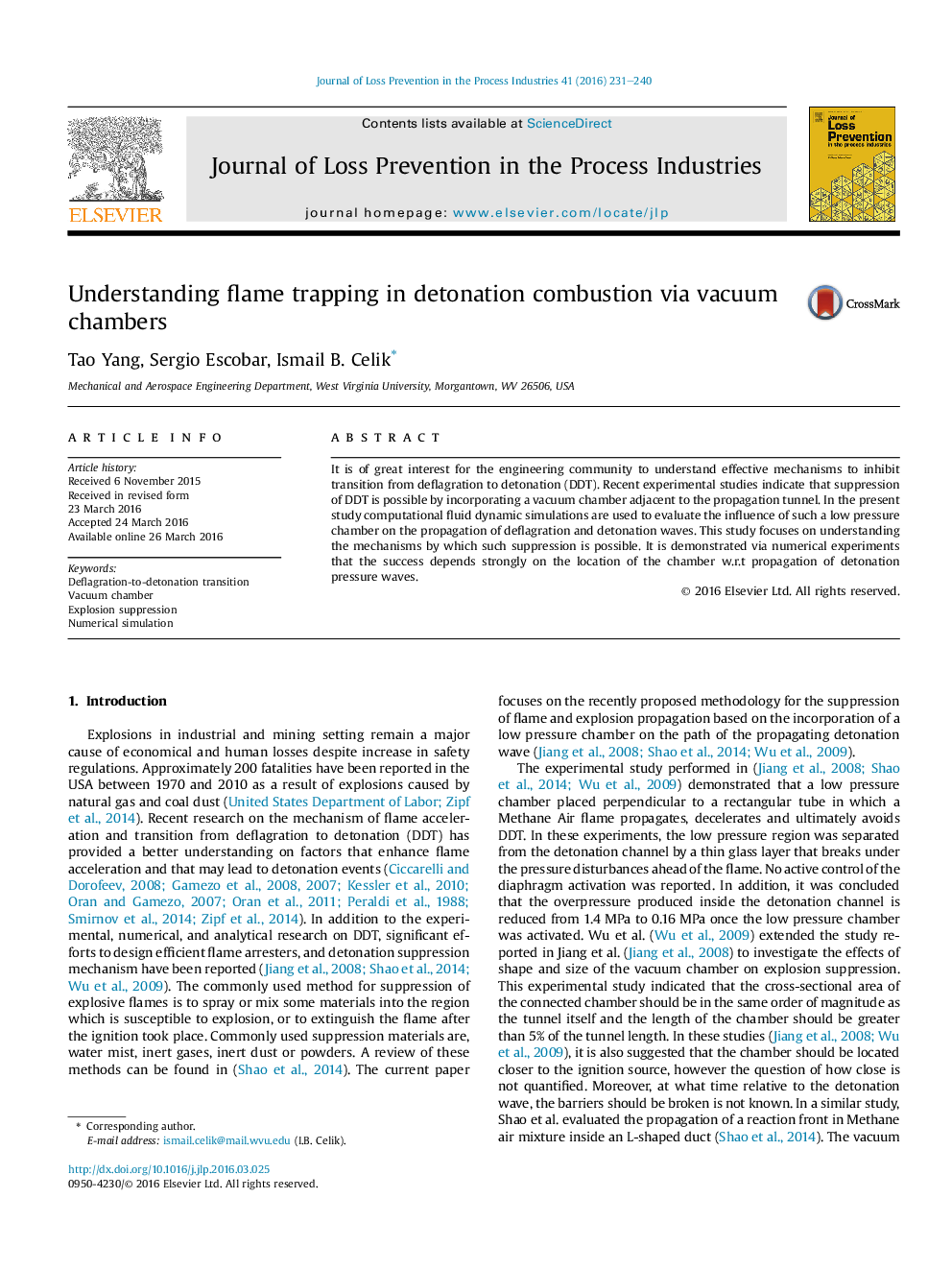| Article ID | Journal | Published Year | Pages | File Type |
|---|---|---|---|---|
| 586058 | Journal of Loss Prevention in the Process Industries | 2016 | 10 Pages |
•The suppression of transition from deflagration to detonation (DDT) in ducts is investigated through numerical simulations.•Three stages are identified in DDT based on analysis of flame propagation.•A low-pressure chamber located before the formation of high pressure-temperature locus can be effective in suppressing DDT.•The location of the low pressure chamber strongly affects its efficiency in suppression of DDT.
It is of great interest for the engineering community to understand effective mechanisms to inhibit transition from deflagration to detonation (DDT). Recent experimental studies indicate that suppression of DDT is possible by incorporating a vacuum chamber adjacent to the propagation tunnel. In the present study computational fluid dynamic simulations are used to evaluate the influence of such a low pressure chamber on the propagation of deflagration and detonation waves. This study focuses on understanding the mechanisms by which such suppression is possible. It is demonstrated via numerical experiments that the success depends strongly on the location of the chamber w.r.t propagation of detonation pressure waves.
